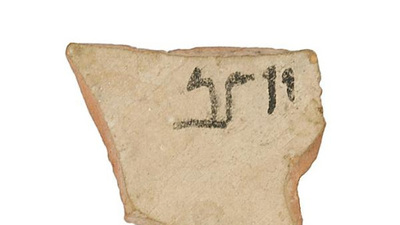A smile on one’s face, even when one is not in a good mood, makes us special, human, and shows we care for the other. As far as we know, no animal is able to smile. Only a human being!
The Sages stated (Ketubot 111b): “One who whitens his teeth (i.e. reveals his teeth by smiling, nlc) to his fellow is better than one who gives him milk to drink, as it states: ‘And his teeth white (leven shinayim) with milk’ (Bereshit 49:12). Do not read [this expression] as ‘leven shinayim’, rather as ‘libbun shinayim’ (the whitening of teeth).”
A smile is an essential ingredient to advance a healthy society – as much as milk serves our physical wellbeing.
One must always ask oneself: what impression do I make on another when I do not smile? Certainly, should one be unhappy or in a period of mourning, one does not easily smile. However, even when it is understandably difficult to don a warm countenance, one must still endeavor to remain dignified.
This is true of all of us, and even more so for Jews who possess the outward appearance of observant Jews – both male and female. Donning a smile is not merely in order to maintain a positive reputation, but because one must realize that one is seen as a person who represents the higher values of Judaism, and who cares for his fellow.
This “smile-conduct” is part of creating a Kiddush Hashem, sanctification of God’s name, which is considered the highest mitzvah (command).
It is related of Rabbi Avraham Grodzinsky (1882-1944), the famous Mashgiach Ruchania (spiritual supervisor) of the famed Slabodka Yeshiva in Eastern Europe and author of Torat Avraham, one of the most famous works on Jewish ethics, that he spent two years perfecting the attribute of “greeting every individual with a pleasant facial countenance.”
People would later attest to the extent he inculcated this precept into his character – even in the most horrific circumstances of the Kovno Ghetto during the Shoah. His pleasant facial expression masked his internal grief. I have been told by people who knew him that he would stand in front of a mirror to learn how to smile all the time.(1)
Indeed, it is as a crime to live one day without laughter and smiling – it is a day wasted!
We observe the power of a smile when we smile at a baby; we immediately receive a smile in return. When we solemnly stare at the child, often, it will start to cry. A child that grows up with smiles around her or him, will generally grow up to be a happy individual.
As said, one may argue that smiling all the time is asking too much.
The only way to solve this problem is even in misery to try bringing happy thoughts to mind. This is only possible when one reminds oneself of all the good things one has experienced and when one lives in constant amazement with the wonders of creation and the very existence of life. Above all, it is a matter of attitude, as Epictetus said: “We suffer not from the events in our lives but from our judgement about them.”
In his book Man’s Search for Meaning (1959), Victor E. Frankl, founder of Logotherapy who was incarcerated in concentration camps during the Shoah, writes that he discovered that one can survive the cruelest conditions as long as one believes that there is a higher meaning to life. Frankl wrote: “Life is never made unbearable by circumstances, but only by lack of meaning and purpose.” And: “In some ways suffering ceases to be suffering at the moment it finds a meaning, such as the meaning of a sacrifice.”
This does not mean that one merely needs to discover the day-to-day meaning such as the love for one’s family; it means, above all, that one is to find existential meaning, meaning that often touches on the question why one lives and why there is a universe. These questions touch on religious and philosophical ideas. And one is to live up to these ideas. It is the need to implement them in tangible, ethical or halakhic actions – something that is very often hard to do.
It is not the mysteries of Heaven we should try to grasp, but the trivialities of our lives and the ability to see these trivialities as an encounter with God. Or, as Abraham Joshua Heschel writes: “In doing the finite we may perceive the infinite.” (The Earth is the Lord’s, p. 106)
One may possess the loftiest ideas and still be an average or even wicked person. The oft-repeated statement, “I am a good Jew at heart” is far from enough. Man must “surpass” his goodness. He is asked to take a leap of action, rather than a leap of faith (Ibid).
This is the reason Halakhah is central to Judaism. Without it, man has not achieved the real purpose of life. He has to move higher. It is not by faith that we become better people, only by action rooted in faith.
I, myself, as a student of the lofty ideas of Judaism, often make this mistake. I tell myself that with my teaching and spreading Torah I have discharged my duty. However, I constantly realize that this far from enough. Are my deeds good enough? Am I living up to all the profound rituals of Judaism that touch my heart in ways it can never be touched otherwise?
Therefore, I continue wondering whether I may actually wear a kippah in full confidence. In all honesty, I feel uneasy and I am pained. Do I always perceive the infinite via the finite? Have I translated all these lofty ideas in action? Definitely not!
Indeed, I know that wearing a kippah is a sign of my pride in my Jewishness and my kippah gives me structure in my life in a world which has become most unstable. Hence, I will not remove my kippah, yet at the very least I should feel uncomfortable when I wear it.
In truth, then, I can only claim that I wear a kippah to “keep the dream alive” – as a reminder of how far I still have to go. Perhaps, as long as I keep trying I am somewhat worthy of my kippah; but it still hurts, and so it should!
(1) The Kovno Ghetto was a ghetto established by Nazi Germany to hold the Jews of Kovno (Kaunas) during the Shoah. In 1944, Rabbi Grodzinski was burned alive when the Kovno hospital he was confined to was set ablaze. Torat Avraham was published posthumously by his son Yitzchak Grodzinsky.




